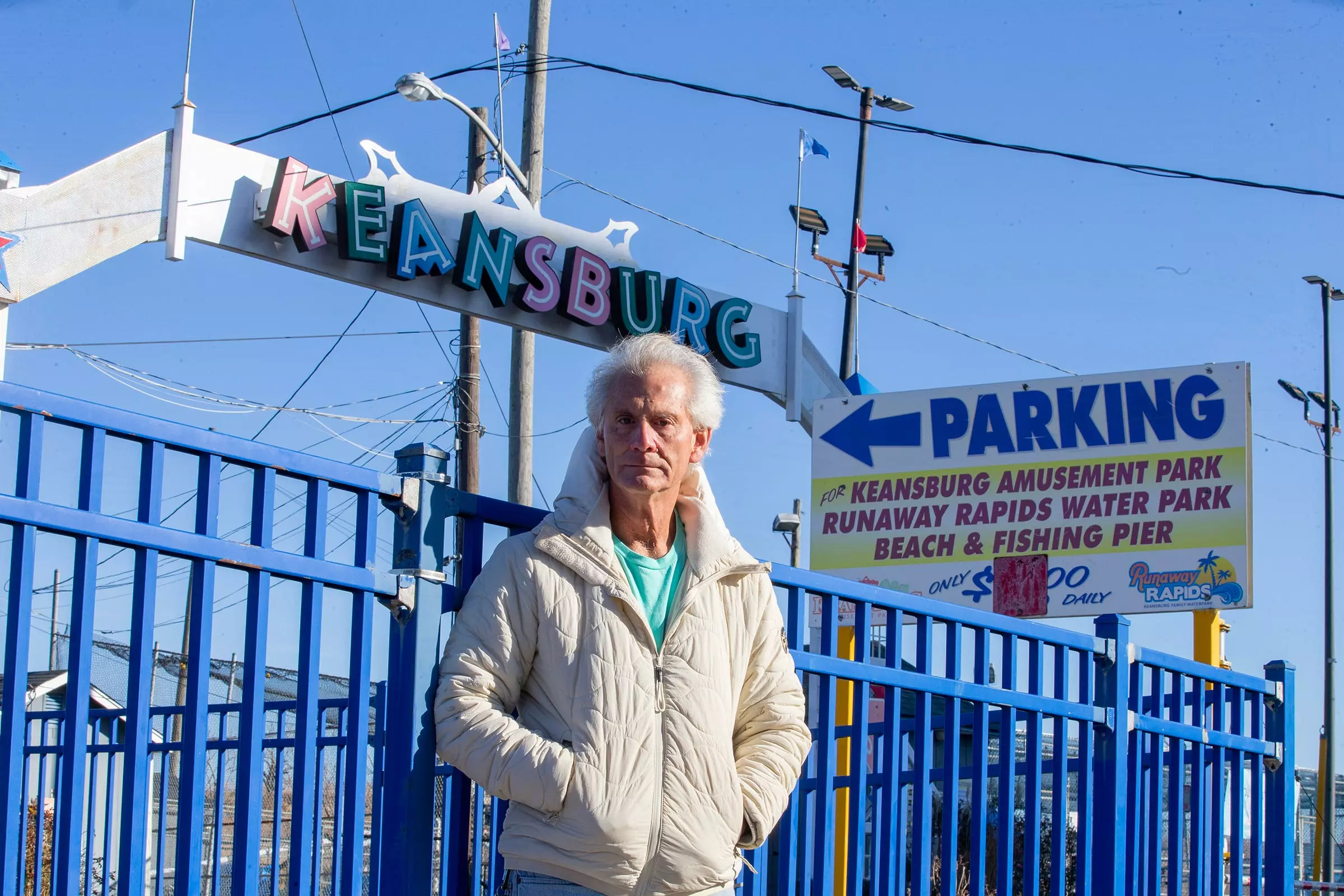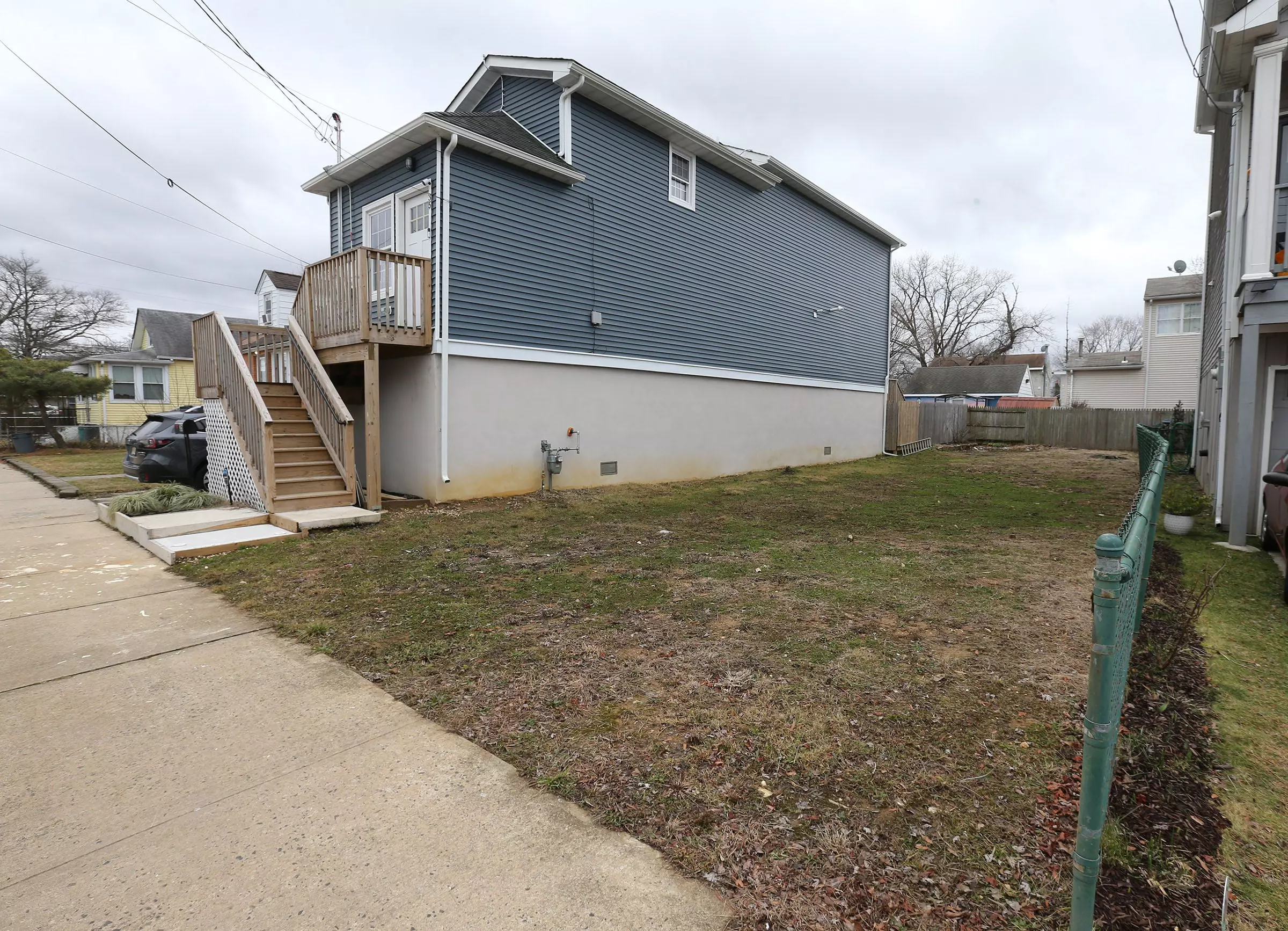 Landlord David Wellington stands in front of his empty property at 33 Myrtle Avenue and completed home at 35 Myrtle Avenue in Keansburg (source: Asbury Park Press)
Landlord David Wellington stands in front of his empty property at 33 Myrtle Avenue and completed home at 35 Myrtle Avenue in Keansburg (source: Asbury Park Press)
David Wellington, a property owner in Keansburg, finds himself at a standstill. With two properties on Myrtle Avenue, he had plans to renovate and build a bigger house. However, due to questions from the borough's planning board regarding property merger and the need for variances, his projects are on hold. Frustrated, Wellington expresses, "I pay two different tax bills; how can the properties be merged? So now I'm sitting here month to month and I can't do anything."
This situation isn't unique to Wellington. Keansburg is currently experiencing significant change as various stakeholders try to capitalize on the booming housing market to transform the waterfront borough. The clash between Keansburg Amusement Park's owner, Hank Gehlhaus, and the borough over a potential loss of parking space for the Baypoint redevelopment project highlights the challenges faced by smaller property owners.
 Hank Gehlhaus, owner of Keansburg Amusement Park, talks about his fight with the borough over a possible loss of one of his biggest parking lots (source: Asbury Park Press)
Hank Gehlhaus, owner of Keansburg Amusement Park, talks about his fight with the borough over a possible loss of one of his biggest parking lots (source: Asbury Park Press)
However, according to Gary Forshner, a land-use attorney and adjunct professor at Monmouth University's Kislak Real Estate Institute, the situation in Keansburg follows a familiar pattern seen in other New Jersey communities. The key is finding the right balance in terms of housing and commercial use. Forshner explains, "What you're seeing is Keansburg pursuing that kind of balance."
The Baypoint redevelopment project, located near the Keansburg Amusement Park, includes plans for luxury apartments and various commercial spaces. Mayor George Hoff reassures the community that the intention is not to squeeze out existing stakeholders like Gehlhaus.
Elsewhere in the town, the housing market is thriving, with houses being sold, rebuilt, and resold at astounding prices. Forshner emphasizes the importance of a strong market to support new developments, as knowledgeable developers will not invest in projects without a viable market. The influx of new housing and commercial spaces aims to reshape Keansburg and replicate the success of neighboring Asbury Park.
 Properties owned by David Wellington in Keansburg (source: Asbury Park Press)
Properties owned by David Wellington in Keansburg (source: Asbury Park Press)
While Keansburg officials aspire to mirror Asbury Park's revival, each community is unique. However, the potential for growth and development exists in Keansburg, just as it did in Asbury Park. One challenge Keansburg faces is a decrease in population over the past few decades, which contributes to issues such as vacancies, blight, and falling property values. Redevelopment initiatives present opportunities to reverse these trends.
David Wellington finds himself caught in the midst of this transformation. Despite facing personal challenges and pushback from the planning board, Wellington remains determined to utilize his properties. As Forshner notes, the initial step of changing the character of a community is often the most difficult.
Keansburg's journey towards revitalization is not without its hurdles. However, with a focus on balance and market viability, the town has the potential to thrive and create a vibrant waterfront community that appeals to residents and visitors alike.
Jerry Carino is a community columnist for the Asbury Park Press, dedicated to sharing the stories and issues that shape the Jersey Shore. You can contact him at [email protected].

















